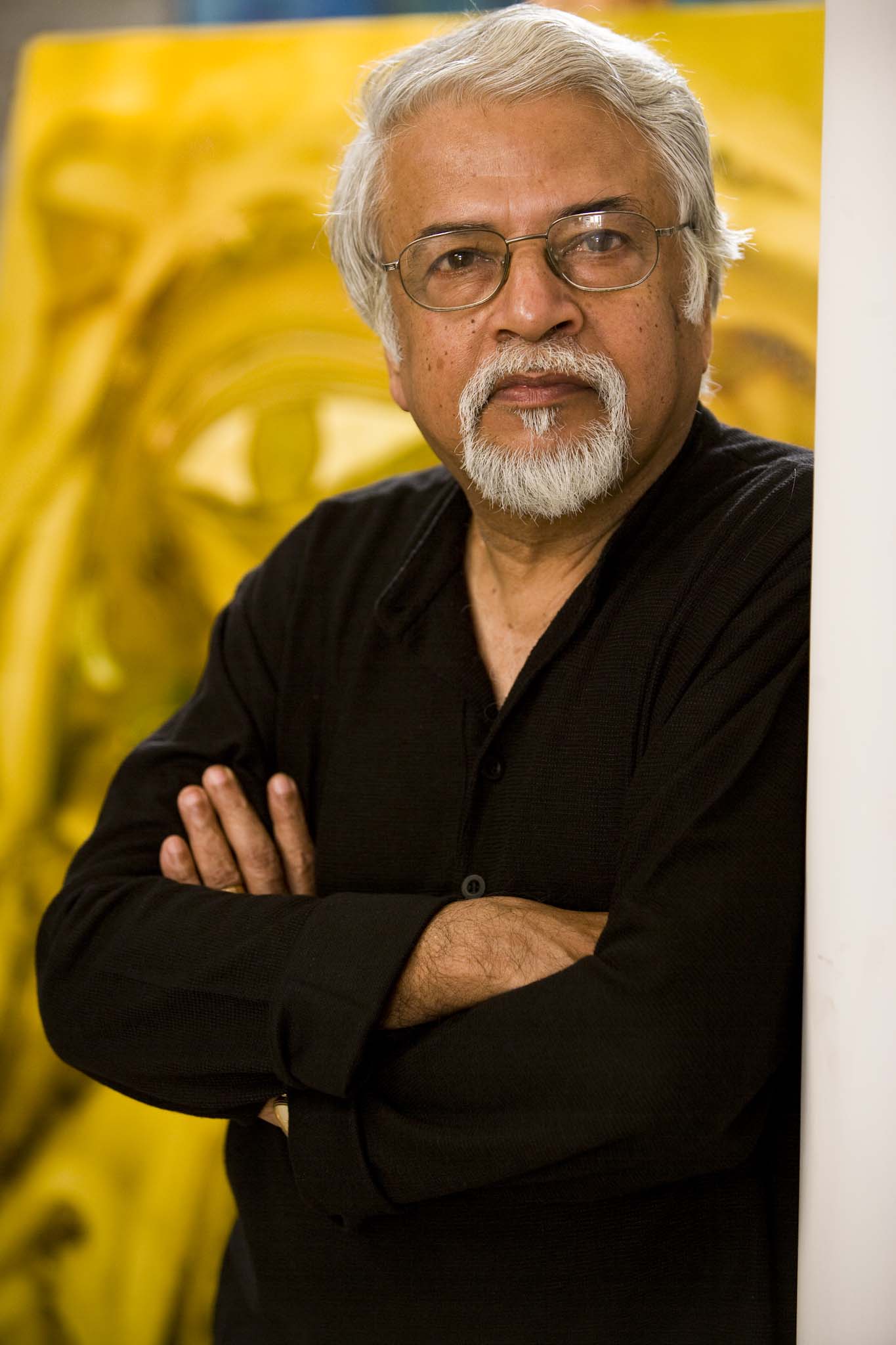S G Vasudev’s retrospective Recollections Reconnections series will be on display at Gallery Sumukha in Bangalore till January 10. The national award-winning artist is reflective as he recalls the young man who once said, “My hands cannot stay idle. They either have to draw or paint.”
The years have revealed his love for the primal line that was the word before the word, the skeleton of thought and feeling. For Vasudev, the line begins as a crisp monologue where less is more and then, it becomes more. It becomes the story of contemporary Indian art where ‘Indianness’ becomes a confluence of tribal innocence, traditional symbols, folk vivacity, Tantrik mysticism and modern minimalism. His art is like the tree of life he loves painting so much. The tree that draws sustenance from the soil and then gives away its fruit, its shade, the music in its leaves to the coming generations.
In an interview, Vasudev tries to explain his processes and his inner world.
Harmony in duality
I see everything in duality. And everything coexists. One cannot sustain without the other. So also, figuration and abstraction. Abstraction does not exist without an object. From the time I worked on Maithuna (a series on human connection on a sensual and spiritual plane), I have always brought out love not only between man and woman but also all other objects in nature. My work, if I have to describe it, is construction-destruction-construction. I try to be positive.
When folk simplicity meets the modern
I always believe in high art. Folk and modern go together as long as their confluence is contemporary. I get inspired by Indian folk, tribal and traditional art. My contemporary work needs them. This is the reason one cannot put my art in any category. I simply enjoy it. Many artists have inspired me. Internationally, Paul Klee, Wassily Kandinsky, Picasso and amongst Indians, Francis Newton Souza, K C S Paniker, J Swaminathan and others.
A day in the studio and the stimuli outside it
I am in my studio for almost six to eight hours a day, whether I paint or not. I work generally for about two to three weeks and then take a break for about two weeks. Those weeks, I do my reading and engage in the process of reacting to things around…music, theatre, cinema, poetry, art. Stimulation comes from so many sources.
The imbalance between humanity and nature
The urban life affects one’s connectivity with nature. But one should sustain connectivity with nature in spite of this. My farmhouse, outside Bengaluru, and my Cholamandal house in Chennai compensate for this loss. I am still lucky.
The keynote of line and the texture of chorus
Line is most important to me. It is the line which leads me to do whatever I want. When it comes to painting, line and texture mingle. One cannot separate them. One works on both at the same time.
His recent works
I worked on various series — Fantasy, Maithuna, Tree of Life, He and She, Humanscapes, Earthscapes, Theatre of Life — and since 2009, I have called my works Rhapsody. When I was working on Theatre of Life, it struck me that music has a strong influence on my way of thinking.
I do a painting in white pigment. It is complete by itself since I say what I have to say over there. But after sometime, I start working on the same painting in colours. Then I start removing the colours from most areas. It is almost like the ‘Raga, Taana and Pallavi’ process in Carnatic music, where a ‘raga’ is elaborated and when it is complete, it is complete by itself. But when ‘taana’ starts, it takes another turn. When it is completed, ‘pallavi’ starts and it normally has verses and it completes the concert. So also my works. I hope I have explained the methodology properly.
For a vibrant, artistic city
We should have more art activities. More art should find space in public spaces. Various art organisations are doing different things and it is important for a city. Artists’ initiatives have created ‘Ananya Drishya’ where art appreciation talks go on every month, ‘ArtPark’ where artists congregate once a month, work in public and interact with them. All these things are happening outside galleries.
So art is not confined to galleries alone. If only the government and corporates give all these activities a push, the city will be much more vibrant. I have been contemplating Bengaluru’s Visual Art Festival on the lines of Bengaluru Literary Festival.
I have started talking to various bodies and individuals. If things go well, we should have this programme by late 2015!
Public spaces for art
I think artists should use whatever public space is available to them. Malls could also be public spaces and I have seen display of public art in the malls too. In fact, we will have a different, new audience for art in these spaces.
 with The New Indian Express
with The New Indian Express






